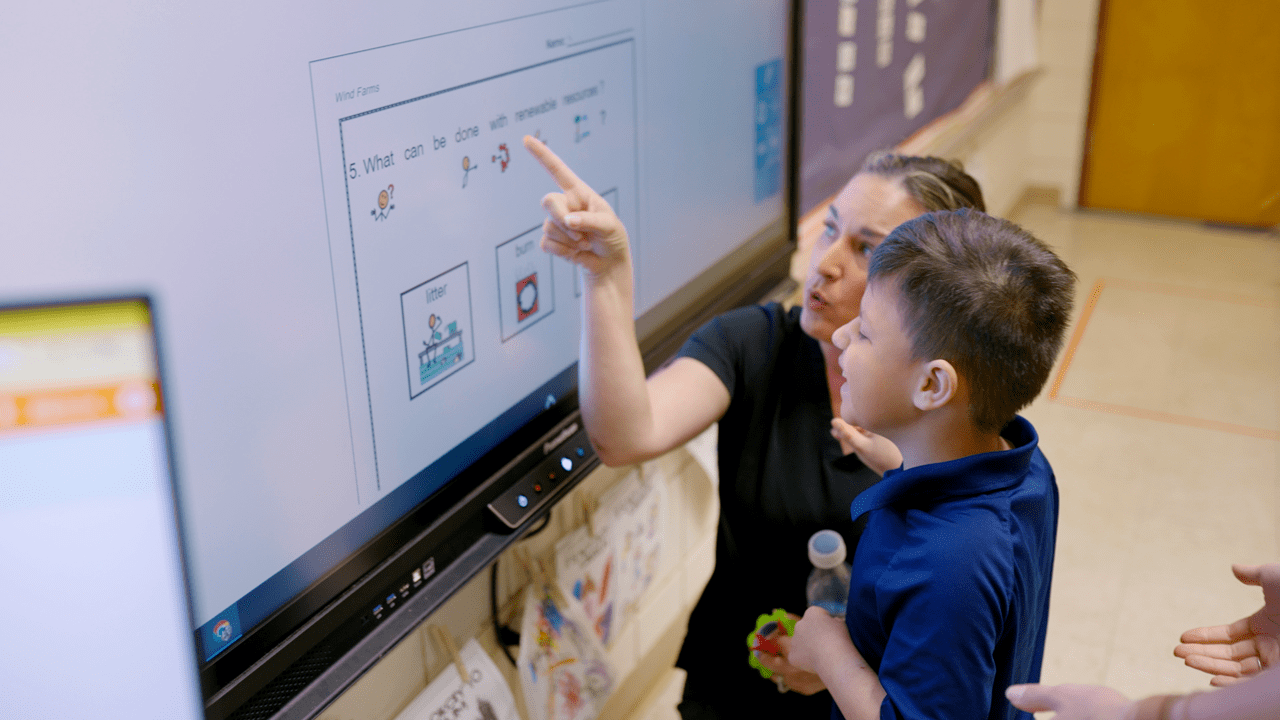Peer Mentoring
We learn our social skills by watching those around us. Often my daughter is told that she sounds “just like her mom.” While I’d like to think it’s because she’s dying to be just like me, that’s probably not the case—she is a teenager, after all. She has similar social mannerisms because she’s grown up watching me interact with people, and she has learned to mimic what has been modeled for her. Peer mentoring is another form of social modeling; same-age peers showing students with unique learning needs what is socially acceptable. When using peers to help teach social skills, it’s important to train them and explain what their role is in your classroom. This can be as simple as a discussion in the hallway explaining what skill you are teaching your students and how the peers can help coach and model for their friends who have communication challenges. Or, it could also be a more sophisticated training program that includes a certificate for the peer models using free certificates from the n2y eXtras. Using peers is a powerful way to create student buy-in and teach social skills to a variety of students.
Video Modeling
If you’ve read any of my previous blogs, I know you’re thinking, “here we go again with the video modeling!” Well, bear with me. Video modeling is an evidence-based practice that is easy to implement and is the most effective strategy I have used in my classroom.
Film and Video Clips
I recently spoke with a speech-language pathologist who mentioned how hard it is to help her students recognize their own unexpected social behavior. When a student can pick out an undesirable social behavior in a movie character, they can then usually see that they are also doing that behavior. For example, a student in my classroom recently realized that when she was talking to others she was too close to them, thanks to a Seinfeld episode about a close talker. Maybe even more important, she was able to see how people react to someone who is too close, which was her motivation to change this behavior. Showing exaggerated behaviors in a clip from a popular film or a TV program like Seinfeld is an ideal way to use film to make a lasting impression.
Student-Made Videos
My student teacher recently assigned a project that helps people develop a better understanding of nonverbal communication. She showed a movie clip without sound and let the students guess what was happening. Then, she played the clip and allowed them to see if their guesses were accurate (which, by the way, they were). Currently, the students are creating their own silent films using iMovie. Once complete, the class will watch each others’ movies and guess the scenario based only on nonverbal communication. The students really enjoy watching each other’s movies and discussing their hypotheses of what is happening in each clip by analyzing the nonverbals.
Sometimes the best lessons are the ones that don’t seem like a lesson at all. Video modeling and peer mentoring are powerful tools to help you explicitly teach desired behaviors and provide a setting to practice communication skills. In the long run, these strategies help students generalize acquired skills to situations in their daily lives and improve their overall functioning. Using video modeling and peer mentoring, it’s easy to design lessons that are both effective, because they are evidence-based, and also fun and engaging.



